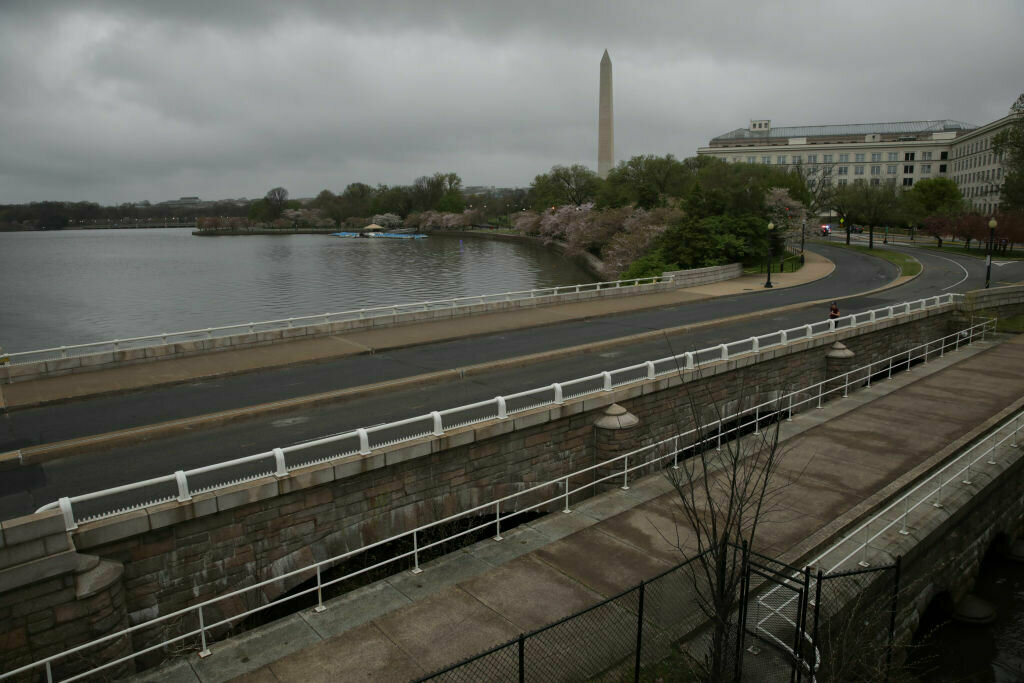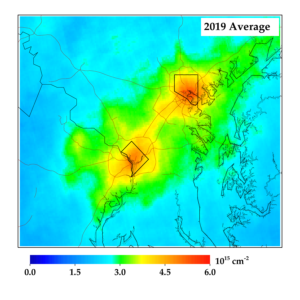
One outcome that is emerging from the mandated stay-at-home orders and other local initiatives related to the coronavirus pandemic is less traffic on D.C.-area roadways.
But the potential for improved air quality remains to be seen, at least for now.
The official U.S. Air Quality Index, or AQI, forecast for the D.C. region on Wednesday was 21, although the actual number fluctuated throughout the day. Any number under 50 is considered “good” by the Environmental Protection Agency.
But there has been no significant change to the AQI since stay-at-home orders were first implemented.

“I would say, right now, the air quality is about the same as it typically would be this time of year,” said Daniel Goldberg, a research scientist with the Milken Institute School of Public Health at George Washington University.
And that is primarily because the weather has a large role in air quality, said Goldberg, who holds a doctorate in atmospheric and oceanic science.
For example, Goldberg said wetter-than-normal conditions would yield cleaner-than-normal air quality.
Fewer cars on the road would have a positive impact on emissions. But more heavy delivery trucks and buses could negate any gains made from personal cars staying parked, said Susan Anenberg, associate professor of environmental and occupational health and global health at George Washington University.
“We also have continued emissions from power plants and other sources that may not be affected by social distancing,” said Anenberg, who holds a doctorate in environmental science and engineering and environmental policy.
She added that research will be ongoing during the stay-at-home orders and long after they are lifted.
“The easiest thing to do would be to look at the days before social distancing started and the days after,” Anenberg said. “The longer this goes on, the more observable a signal we may see.”
Maryland Secretary of the Environment Ben Grumbles is encouraged by the data he is seeing, as more residents begin teleworking procedures.
“The silver lining to the stay-at-home and less traffic is less air pollution. Our monitors, our scientists and our satellites are confirming that,” he said.
Grumbles added that this moment in U.S. and world history could prove to be a turning point in how people approach air pollution.
“We’re working with scientists from NASA and the University of Maryland to really seize on this opportunity, to build in future practices that reduce smog and greenhouse gases, and use the transportation sector to help achieve those environmental goals,” Grumbles said.
Grumbles added that as agencies and businesses embrace teleworking like never before, “This is a great opportunity to use the technologies, to help reduce the amount of energy and pollution that would otherwise be caused by traffic and other actions.”
- Sign up for news alerts from WTOP
- Closings and delays
- DC stay-at-home order: What’s allowed
- Maryland stay-at-home order: What’s allowed
- Virginia stay-at-home order: What’s allowed
- What businesses can stay open in DC?
- What businesses can stay open in Maryland?
- What businesses can stay open in Virginia?
- Coronavirus test results in D.C., Maryland and Virginia
- Coronavirus FAQ: What you need to know







